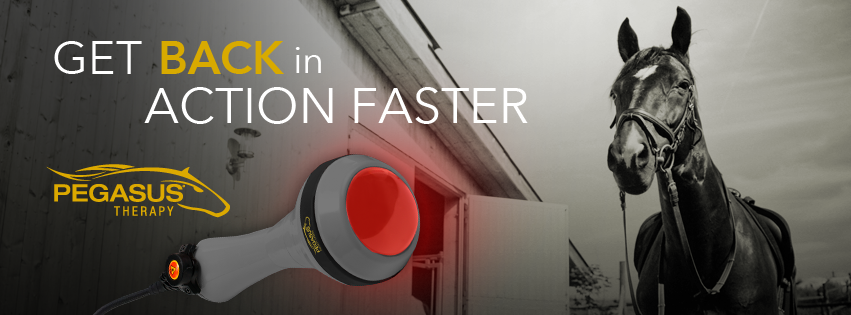Equine Therapy Programs: Changing Lives One Experience each time
Equine Therapy Programs: Changing Lives One Experience each time
Blog Article
Reviewing the Performance of Laser Treatment in Horse Treatment for Injury Rehabilitation
The evaluation of laser treatment's performance in equine injury recovery pivots on numerous aspects, consisting of healing time, discomfort reduction, and cells regrowth. Veterinarians frequently observe exceptional outcomes with laser treatment contrasted to traditional techniques, positioning it as an essential component in equine treatment.
Understanding Laser Treatment
Laser treatment has actually ended up being a critical tool in vet medication, especially in the treatment of equine problems. Understood for its non-invasive nature and effectiveness, laser therapy includes the application of details wavelengths of light to promote tissue repair and lower swelling. This restorative method is significantly favored for its ability to increase the healing procedure in equines experiencing from a variety of bone and joint injuries and chronic problems.
The primary mechanism behind laser therapy is its capability to boost cellular functions. Furthermore, laser treatment advertises vasodilation, boosting blood flow and oxygen shipment to broken cells, hence expediting recovery.
In equine medicine, laser therapy is especially beneficial for conditions such as tendonitis, osteoarthritis, and wound healing. The method is admired for its pain-relieving properties, allowing horses to restore wheelchair and feature a lot more swiftly. Vets additionally value its marginal side results contrasted to other treatment techniques, making it a trustworthy and secure alternative for equine treatment.

Just How Laser Treatment Works

Upon absorption, these photons trigger a collection of biochemical modifications, boosting mitochondrial feature and resulting in raised adenosine triphosphate (ATP) manufacturing. This rise in ATP increases cellular metabolism, advertising tissue fixing and regrowth. Additionally, laser treatment modulates inflammatory reactions by influencing cytokine levels and lowering oxidative anxiety, thus alleviating discomfort and swelling.
Another substantial aspect of laser treatment is its role in improving microcirculation. The treatment advertises vasodilation, boosting blood flow and oxygen distribution to damaged tissues (Equine Therapy). This assists in the elimination of cellular debris and sustains the spreading of fibroblasts and collagen synthesis, essential for wound healing
Clinical Evidence
The efficiency of laser treatment in equine treatment has been corroborated through different scientific researches, showcasing its healing possible throughout a variety of conditions. Numerous controlled tests and empirical researches have actually recorded significant renovations in cells repair service, discomfort reduction, and general rehab timelines. A research conducted by Turner et al. (2012) demonstrated that steeds treated with low-level laser treatment (LLLT) for tendon injuries exhibited accelerated recovery compared to those obtaining traditional therapies. The research highlighted a marked reduction in swelling and enhanced collagen development.
In a similar way, research by Johnson and associates (2015) focused on equine muscle mass injuries, disclosing that laser treatment significantly accelerated muscle mass fiber regeneration and decreased muscular tissue rigidity. Clinical analyses have revealed that laser treatment can relieve persistent conditions such as osteoarthritis.
Vet Insights

Veterinarians likewise value the convenience of laser therapy. She aims out that laser treatment can be tailored to the details demands of each steed, making sure optimal end results.
Furthermore, vets value the ability to incorporate laser therapy with various other treatment techniques. This multimodal technique can enhance overall therapy effectiveness, giving a thorough service for equine rehab. Such endorsements from skilled professionals underscore the growing approval and application of laser therapy in equine medicine.
Practical Factors To Consider
An essential aspect of carrying out laser treatment in equine treatment includes recognizing the practical factors to consider that guarantee its efficiency and safety. Firstly, it is vital to choose the appropriate laser device, as various types differ in wavelength, power, and penetration deepness. Equine Therapy. Veterinarians need to be fluent in these criteria to tailor therapy procedures properly to each injury type
Furthermore, the frequency and duration of laser therapy sessions require cautious planning to make best use of healing benefits while decreasing any type of potential adverse impacts. Regular tracking of the steed's reaction to therapy can direct needed changes in the therapy routine. Developing a risk-free and regulated environment during therapies is additionally necessary to protect against accidental exposure to laser exhausts, which could damage both the steed and the handler.
Training and accreditation of workers carrying out laser therapy are extremely important to guarantee appropriate strategy and to copyright safety criteria. Additionally, keeping exact documents of each session, including laser settings and observed end results, is vital for assessing the general efficiency of the Visit Website therapy and for making data-driven choices.
Final Thought
Laser treatment has actually emerged as an effective technique in equine injury recovery, providing substantial benefits in healing time, pain relief, and cells recovery. For ideal outcomes, constant surveillance and individualized treatment protocols stay necessary in leveraging the full potential of laser therapy in equine treatment.
Report this page